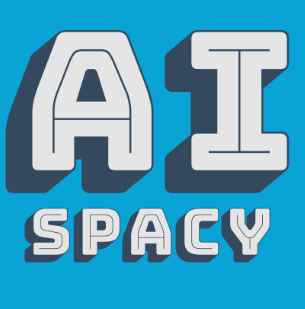Ai app recommendations for creators
Of course, AI has opened up many opportunities for creators in various fields. Here are 10 AI apps for creators:
Content Creation
Content Creation: AI-powered tools can help writers, bloggers and content creators produce articles, blog posts and social media content more efficiently. Tools like GPT-3 can help produce creative and engaging text.
There are a number of tools and software that can be used for Natural Language Processing (NLP) in AI applications. Here are some popular examples:
1. NLTK (Natural Language Toolkit): NLTK is a popular Python library for natural language processing. It provides a variety of tools and resources for tasks such as tokenization, stemming, grammar analysis, and more.
2. spaCy: This is a fast and efficient Python natural language processing library. spaCy can be used for tasks such as sentence splitting, grammar parsing, and entity recognition.
3.Gensim: Gensim is a well-known library for modeling text and documents using techniques such as Word2Vec and Doc2Vec. This is useful for generating vector representations of words in semantic space.
4. BERT (Bidirectional Encoder Representations from Transformers)**: BERT is a language model that is trained in depth using transformers. It's perfect for language comprehension tasks like answering questions, sentiment analysis and more.
5. OpenNLP: Apache OpenNLP is an open source natural language processing tool that provides various algorithms for tasks such as tokenization, sentence segmentation and entity recognition.
6. CoreNLP: This is a natural language processing tool developed by Stanford University. It supports a variety of NLP tasks, including entity recognition, referencing, and grammar analysis.
7. Transformer (Hugging Face): The Transformers library by Hugging Face provides a wide range of leading transformer models, such as GPT-3 and BERT, as well as a simple interface for using them.
8. AllenNLP: This is an NLP library built on top of PyTorch. AllenNLP focuses on research and development of advanced NLP models.
9. Dialogflow: A Natural Language Processing Service developed by Google to build chatbots and other text-based interactions.
10.Wit.ai: Facebook's Natural Language Processing Platform, which enables developers to build applications that can understand and respond to voice commands.
Each tool has its own unique features and functions, and the choice depends on project needs and developer preferences.
Artificial Intelligence Art
AI algorithms can produce works of art, music, and even poetry. Creators can use AI to inspire new forms of artistic expression or collaborate with AI to create unique works.
The application of artificial intelligence-based art tools (Artificial Intelligence Art) is growing and offers new opportunities for artists and creatives. Here are some examples of applications of artificial intelligence tools in art:
1. Generative Art: AI can produce unique and original works of art with generative algorithms. Examples are works of visual art, paintings, and images generated by algorithms based on certain patterns and parameters.
2.Style Transfer: This technique allows artists to incorporate visual styles from one image to another. AI can combine elements of an artist's style with different objects or backgrounds.
3. Generating Music and Voice: AI can create unique musical compositions based on analysis of existing musical patterns. It can be used in orchestral compositions, pop songs, and even avant-garde sound experiments.
4. Poetry and Creative Writing: AI can generate poetry, short stories, or other creative writing based on an analysis of sentence structure and words in various styles or themes.
5. Image Processing: Tools such as deepdream and neural style transfer can give images unique visual effects by manipulating pixels based on patterns from a trained model.
6. Character and Virtual World Creation: AI can help artists generate virtual worlds and characters in the gaming, animated film, and other media industries. This includes creating realistic character faces, environmental design, and character behavior.
7. Image Restoration and Art Recovery: AI can help restore old damaged or lost images and artwork. This technique is useful in the restoration of historical and cultural art objects.
8. Interactive Art and Virtual Reality: With technologies such as VR and AR, artists can create interactive experiences that allow users to engage directly with artwork created by AI.
9. Collaborative Artwork with AI: Several artists collaborate with artificial intelligence algorithms to create works of art together. This could involve the artist providing directions or tweaking the output generated by the AI.
10. Sentiment Analysis in Art: AI can be used to analyze responses and responses to works of art through sentiment analysis and online comments.
It's important to remember that while AI can aid in the creative process, powerful artwork is still based on the artist's imagination, vision, and personal expression. The use of AI can serve as an additional tool to expand creativity, but the true value of works of art often comes from uniquely human aspects.
Video and Film Production:
Video and Film Production: AI can assist in video editing, color correction and even producing special effects. It can analyze footage to help creators make editing decisions and streamline post-production processes.
Music Composition:
Music Composition: Musicians can use AI to create melodies, harmonies and even entire songs. AI can analyze existing music to come up with new compositions in various genres.
Design and Illustration:
Design and Illustration: Graphic designers and illustrators can use AI to help create logos, graphics and illustrations. AI tools can provide design suggestions, generate patterns, and even assist in layout design.
Photography Enhancement:
Photography Enhancement: AI algorithms can enhance and improve photos, adjust lighting and improve image quality. Photographers can save post-processing time and achieve smoother results.
Game Development:
Game Development: AI can help game developers create more immersive experiences. These can be used to generate in-game content, evolve intelligent NPCs (non-player characters), and improve game mechanics.
Fashion Design:
Fashion Design: AI can analyze trends, customer preferences and historical data to assist fashion designers in creating new clothing lines and predicting popular styles.
Virtual Reality (VR)
Virtual Reality (VR) and Augmented Reality (AR Creators can use AI to develop more realistic and interactive VR and AR experiences. AI can help render lifelike environments and generate interactive elements.
Content Recommendation and Personalization
Content Recommendation and Personalization Creators in content marketing and distribution can leverage AI to personalize content recommendations for their audience. AI algorithms analyze user preferences to suggest relevant content, increasing user engagement.
Remember, while AI can be a powerful tool, it is important to use it wisely and strike a balance between automation and human creativity. The best results often come from a combination of AI capabilities with the unique insights and creativity that humans bring.





Post a Comment